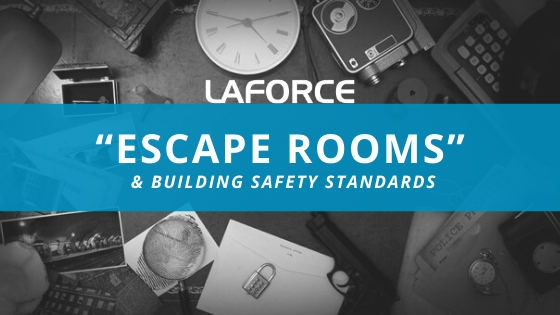You and your colleagues decide to embark on a team-building exercise, and choose your community’s latest establishment: an escape room. These attractions are designed to challenge people to “escape” from a locked room, using puzzles and clues, within a pre-determined amount of time.
Escape rooms are meant to be fun, bonding experiences! But if you’re concerned over the safety of such ventures, you’re not alone. How do building codes apply to “locked-room” entertainment gimmicks? There are several options that “escape room” venues may be able to take, to ensure that their facilities meet building codes and life safety codes.
We have outlined three potential solutions. The first two options are code compliant. The third option would require approval from the AHJ (Authority Having Jurisdiction):
- The door(s) keeping players “locked in” are not actually locked from the inside, but instead, could have hardware that activates an alarm if the door is opened before the players solve the puzzle(s). An attendant would monitor the players and deactivate the alarm once the players solve the puzzle(s). The room could also include a red light/green light that is connected to the status of the alarm. Based on the color of the light, the players are informed whether or not they solved the puzzle, which in turn tells them whether or not the alarm will sound when they open the door.
- A separate exit door that is designated as an “emergency exit only” could be installed inside the escape room.
- Assuming the occupancy is classified as a business, the facility could use an electromagnetic lock to keep players “locked in” until the attendant deactivates the lock, there is loss of power to the lock, or a panic button is pushed from inside the room. However, this set-up would require approval from the Authority Having Jurisdiction (AHJ) because IBC states electromagnetically controlled doors are to have hardware affixed to the door leaf that interrupts the power to the magnetic lock and immediately unlocks the door. This hardware also has to an obvious method of operation under all lighting conditions. A panic button located in the room would not meet these criteria, but an AHJ might approve this set up if the occupants are always given special instructions on how to exit the room in the case of an emergency.
Thank you Kristi Dietz (LaForce Engineering Training Manager) for providing technical expertise for this blog!



Follow Us